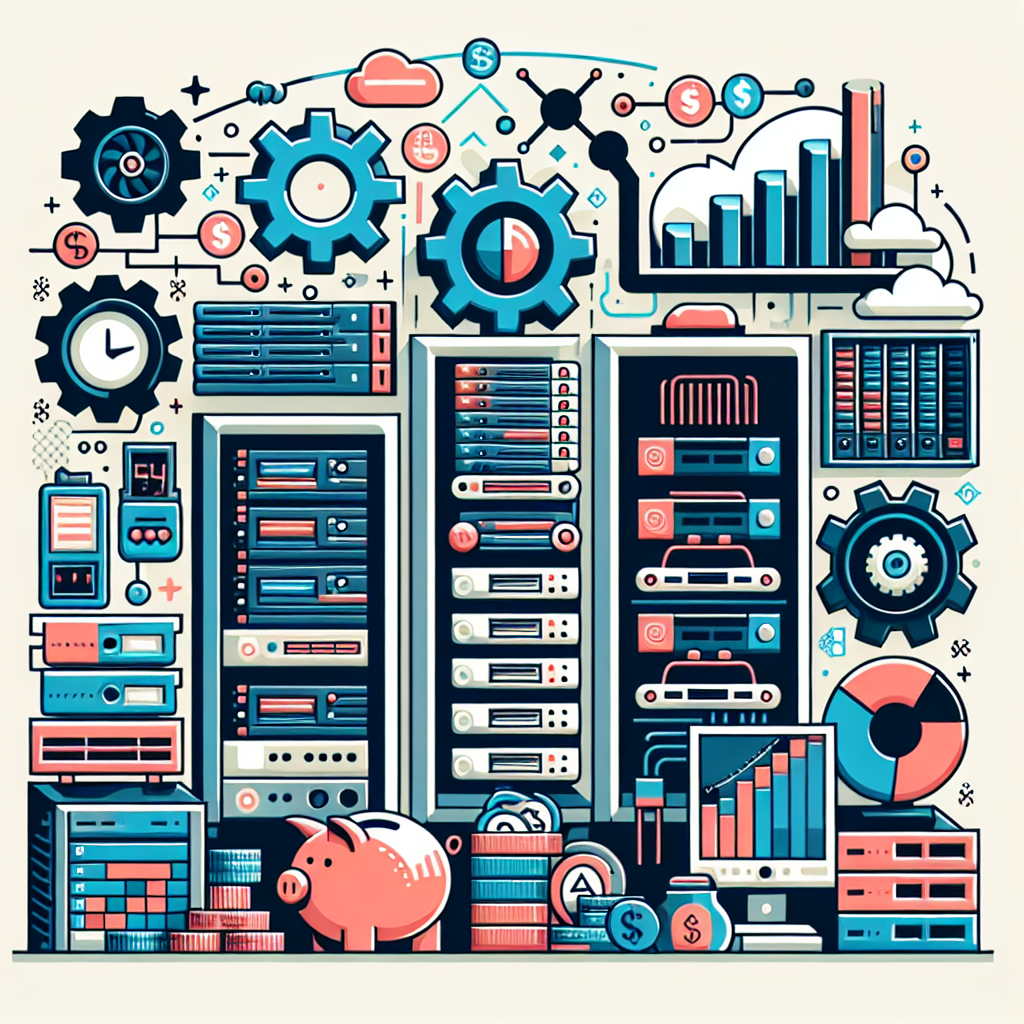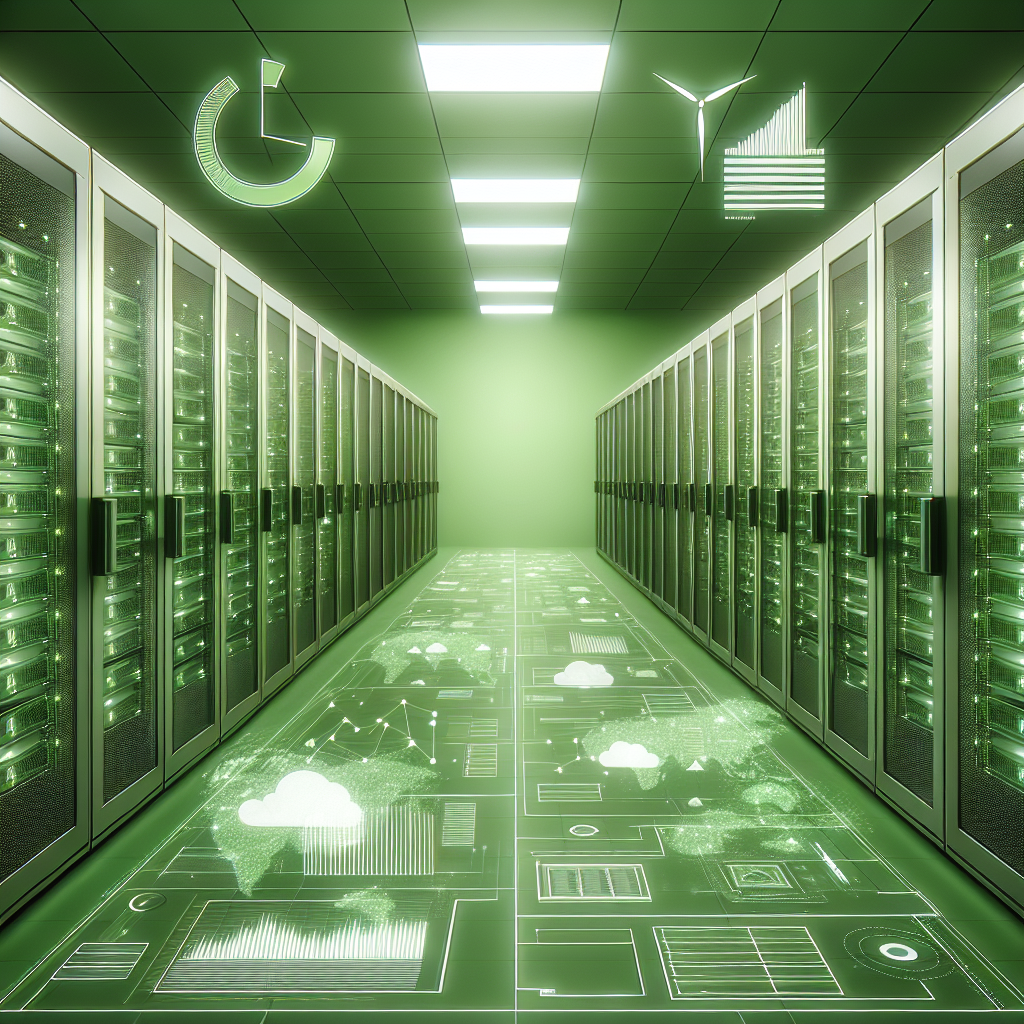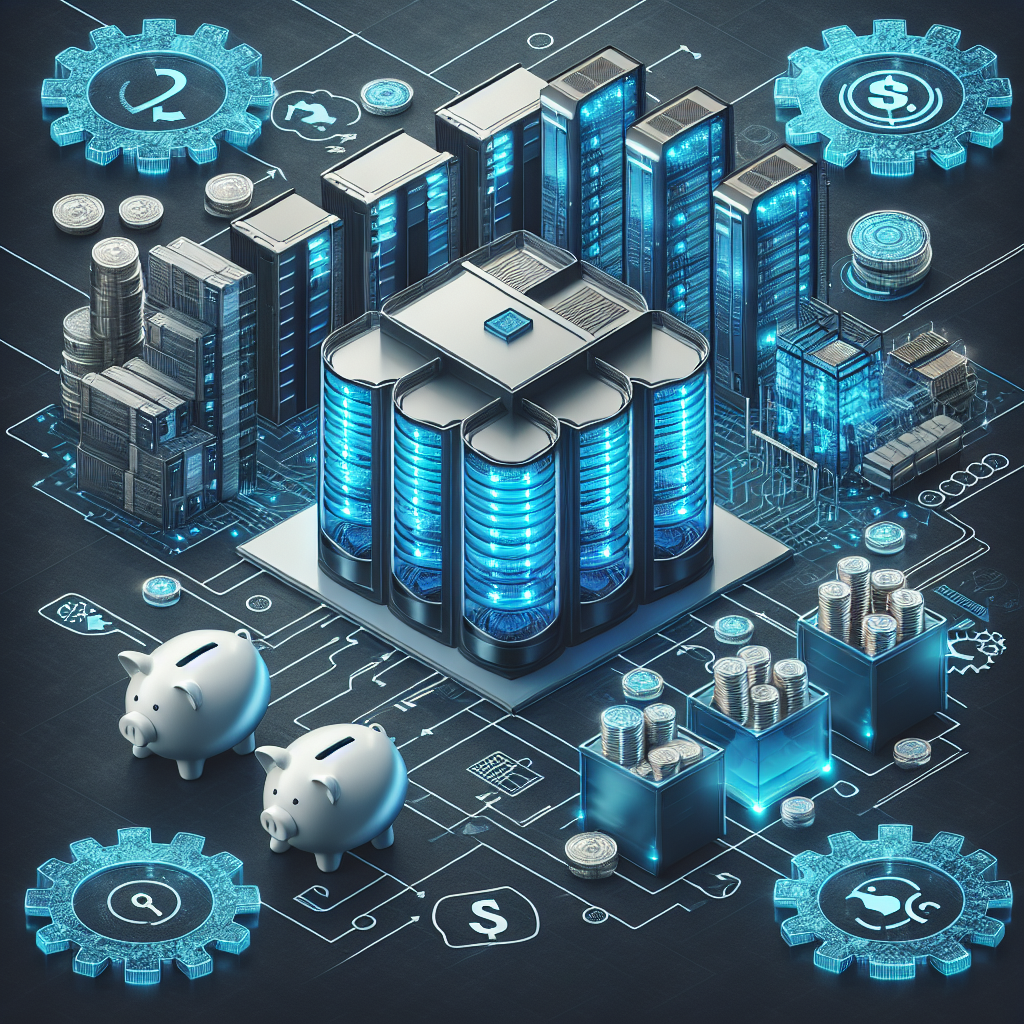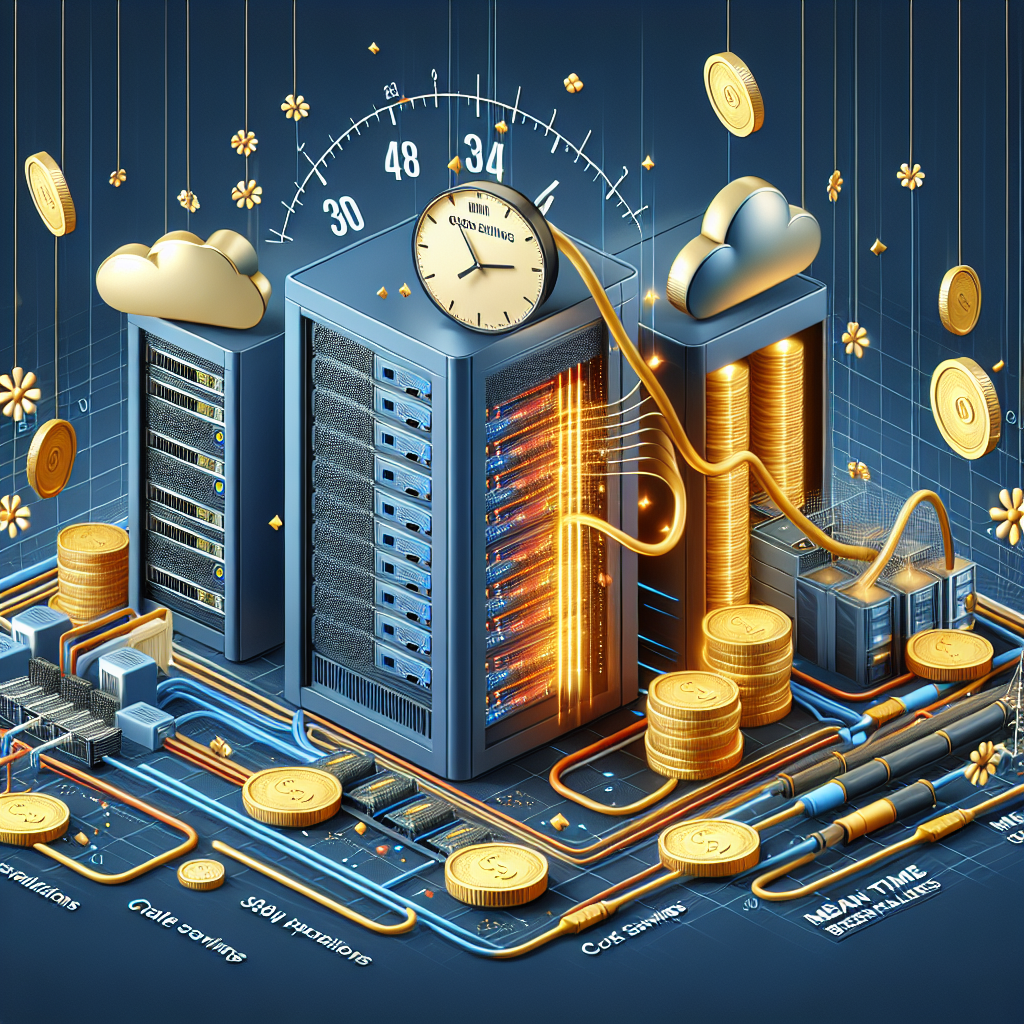Your cart is currently empty!
Tag: Savings

Driving Cost Savings and Improving Reliability with Data Center Predictive Maintenance
In today’s fast-paced business environment, data centers play a crucial role in ensuring the smooth operation of various organizations. With the increasing reliance on technology, downtime in data centers can have a significant impact on business operations and profitability. In order to mitigate the risk of unexpected downtime, many organizations are turning to predictive maintenance techniques to drive cost savings and improve reliability in their data centers.Predictive maintenance is a proactive approach to maintenance that uses data analytics and machine learning algorithms to predict when equipment is likely to fail. By analyzing historical data and monitoring the performance of critical components in real-time, organizations can identify potential issues before they escalate into costly downtime events.
One of the key benefits of predictive maintenance is the ability to schedule maintenance activities at the most optimal time, reducing the likelihood of unplanned downtime. By addressing issues before they cause a failure, organizations can save on the costs associated with emergency repairs, lost productivity, and potential damage to equipment.
In addition to cost savings, predictive maintenance can also improve the overall reliability of data center operations. By continuously monitoring the health of critical components, organizations can identify trends and patterns that may indicate potential issues in the future. This proactive approach allows organizations to take corrective action before a failure occurs, minimizing the impact on business operations.
Furthermore, predictive maintenance can help organizations extend the lifespan of their equipment by ensuring that it is operating at peak performance levels. By detecting and addressing issues early on, organizations can prevent wear and tear on critical components, ultimately reducing the need for premature replacements and costly upgrades.
Overall, driving cost savings and improving reliability with data center predictive maintenance is essential for organizations looking to maintain a competitive edge in today’s digital landscape. By leveraging the power of data analytics and machine learning algorithms, organizations can proactively manage their data center infrastructure and ensure that it is operating at its full potential. As technology continues to evolve, predictive maintenance will become an essential tool for organizations looking to optimize their data center operations and drive business success.

Maximizing Efficiency and Cost Savings with Data Center Server Consolidation
In today’s digital age, businesses are constantly looking for ways to maximize efficiency and cut costs. One way to achieve both of these goals is through data center server consolidation.Data center server consolidation involves reducing the number of physical servers by virtualizing them onto fewer, more powerful servers. This allows businesses to maximize the use of their server resources and reduce the amount of physical space needed to house servers.
By consolidating servers, businesses can achieve a number of benefits. One of the main advantages is increased efficiency. With fewer physical servers to manage, IT teams can more easily monitor and maintain the servers, leading to improved performance and uptime. Additionally, virtualized servers can be easily scaled up or down to meet changing demands, providing greater flexibility and agility for businesses.
Consolidating servers can also lead to cost savings. By reducing the number of physical servers, businesses can save on hardware, maintenance, and energy costs. Additionally, consolidating servers can lead to lower cooling costs, as fewer servers generate less heat and require less cooling.
Furthermore, server consolidation can help businesses to better utilize their resources. By virtualizing servers onto fewer machines, businesses can make better use of their server capacity and avoid underutilized servers sitting idle. This can lead to increased productivity and efficiency for businesses.
In order to successfully consolidate servers, businesses should carefully assess their current server infrastructure and workload requirements. It is important to consider factors such as server performance, storage capacity, and network connectivity when planning a server consolidation strategy.
Businesses should also consider working with a trusted IT partner to help with the server consolidation process. An experienced IT partner can help businesses assess their current infrastructure, design a consolidation plan, and implement the necessary changes to achieve maximum efficiency and cost savings.
In conclusion, data center server consolidation is a valuable strategy for businesses looking to maximize efficiency and cut costs. By reducing the number of physical servers and virtualizing them onto fewer, more powerful machines, businesses can achieve greater efficiency, cost savings, and resource utilization. With careful planning and the assistance of a trusted IT partner, businesses can successfully consolidate servers and reap the benefits of a more streamlined and cost-effective server infrastructure.

The Impact of Data Center Cooling on Energy Efficiency and Cost Savings
Data centers are essential for storing and processing large amounts of data in today’s digital world. However, data centers also consume a significant amount of energy to operate, with cooling being one of the biggest energy consumers. In fact, cooling systems can account for up to 40% of a data center’s total energy usage.The impact of data center cooling on energy efficiency and cost savings cannot be understated. By implementing efficient cooling systems and strategies, data center operators can significantly reduce their energy consumption and operating costs.
One of the key factors in optimizing data center cooling is airflow management. By ensuring that air flows efficiently through the data center, hot spots can be minimized, and cooling systems can operate more effectively. This can be achieved through the use of containment systems, such as hot aisle/cold aisle configurations, to separate hot and cold air streams and prevent them from mixing.
Another important aspect of data center cooling is the use of energy-efficient cooling technologies. Traditional cooling systems, such as CRAC units, are often inefficient and consume a lot of energy. By upgrading to more energy-efficient technologies, such as in-row cooling units or adiabatic cooling systems, data center operators can reduce their energy consumption and lower their operating costs.
Furthermore, data center operators can also implement temperature and humidity controls to optimize cooling efficiency. By maintaining the data center at the optimal temperature and humidity levels, cooling systems can operate more efficiently and effectively, leading to energy savings and cost reductions.
In addition to energy efficiency, optimizing data center cooling can also have a positive impact on the environment. By reducing energy consumption, data center operators can lower their carbon footprint and contribute to a more sustainable future.
Overall, the impact of data center cooling on energy efficiency and cost savings is significant. By implementing efficient cooling systems and strategies, data center operators can reduce their energy consumption, lower their operating costs, and contribute to a more sustainable environment. It is essential for data center operators to prioritize cooling optimization to maximize energy efficiency and cost savings in their facilities.

Harnessing Data Center Problem Management for Optimal Operations and Cost Savings
Businesses today rely heavily on data centers to store, process, and manage their critical information. As such, it is crucial for organizations to ensure that their data centers are operating efficiently and effectively. One key aspect of maintaining optimal data center operations is problem management.Problem management involves identifying and addressing issues that may arise within a data center environment. This can include hardware failures, network outages, software glitches, and other technical problems that can disrupt operations and impact business productivity. By harnessing data center problem management strategies, organizations can proactively address issues before they escalate, minimize downtime, and ultimately save costs.
One of the main benefits of effective problem management is the ability to prevent recurring issues. By analyzing data center performance metrics and trends, IT teams can identify patterns and root causes of problems, allowing them to implement permanent solutions and prevent similar issues from occurring in the future. This not only reduces the likelihood of downtime and service disruptions but also saves time and resources that would otherwise be spent on repeatedly addressing the same issues.
Furthermore, proactive problem management can help organizations optimize their data center operations. By continuously monitoring and analyzing performance data, IT teams can identify areas for improvement and implement changes to enhance efficiency and maximize resource utilization. This can lead to cost savings by reducing energy consumption, improving hardware utilization, and streamlining workflows.
In addition, effective problem management can also enhance the overall reliability and resilience of a data center. By quickly identifying and resolving issues, organizations can minimize the impact of potential disruptions and ensure that critical systems and services remain available and operational. This is especially important for business continuity and disaster recovery planning, as a well-maintained data center is better equipped to handle unexpected events and maintain operations during challenging circumstances.
To harness the power of data center problem management for optimal operations and cost savings, organizations should implement a comprehensive approach that includes:
– Regular monitoring and analysis of data center performance metrics
– Proactive identification and resolution of issues before they escalate
– Root cause analysis to prevent recurring problems
– Continuous improvement of data center operations and infrastructure
– Collaboration between IT teams, stakeholders, and service providers
By prioritizing problem management and investing in the necessary tools and resources, organizations can ensure that their data centers operate at peak performance, minimize downtime, and achieve cost savings in the long run. Ultimately, effective problem management is a critical component of a successful data center strategy and can help organizations stay competitive in today’s fast-paced digital landscape.

The Business Case for Data Center Sustainability: Cost Savings and Environmental Benefits
As businesses continue to grow and expand their operations, the demand for data centers is on the rise. These facilities are essential for storing and processing large amounts of data that are crucial for the day-to-day operations of companies. However, with the increasing reliance on data centers comes a growing concern for their environmental impact.Data centers are known to consume massive amounts of energy, which can contribute to greenhouse gas emissions and environmental degradation. In recent years, there has been a push for data centers to become more sustainable and environmentally friendly. Not only is this important for reducing their carbon footprint, but it also makes good business sense.
One of the key reasons for businesses to invest in sustainable data centers is the potential for cost savings. By implementing energy-efficient technologies and practices, companies can significantly reduce their operating costs. For example, using advanced cooling systems and optimizing server utilization can lead to lower electricity bills and overall operational expenses. In addition, many governments and regulatory bodies are offering incentives and tax breaks for companies that adopt sustainable practices, further increasing the financial benefits of going green.
Furthermore, sustainable data centers can also improve a company’s reputation and brand image. Consumers are becoming increasingly conscious of environmental issues and are more likely to support businesses that demonstrate a commitment to sustainability. By investing in green technologies and practices, companies can attract environmentally conscious customers and partners, enhancing their market competitiveness and long-term sustainability.
In addition to cost savings and brand benefits, sustainable data centers also have a positive impact on the environment. By reducing energy consumption and carbon emissions, companies can help mitigate climate change and preserve natural resources for future generations. This not only benefits the planet but also ensures the long-term viability of businesses by reducing their exposure to environmental risks and regulations.
In conclusion, the business case for data center sustainability is clear. By investing in green technologies and practices, companies can not only reduce their operating costs and improve their brand image but also contribute to a more sustainable future for all. It is essential for businesses to prioritize sustainability in their data center operations to stay competitive, reduce their environmental impact, and create long-term value for their stakeholders.

Streamlining Data Center IT Operations for Efficiency and Cost Savings
In today’s digital age, data centers play a crucial role in ensuring the smooth functioning of various IT operations. However, managing and maintaining these data centers can be a complex and costly affair. To address these challenges, organizations are increasingly turning to streamlining their data center IT operations for efficiency and cost savings.Streamlining data center IT operations involves optimizing processes, automating tasks, and implementing best practices to improve overall performance and reduce operational costs. By adopting a structured approach to data center management, organizations can achieve greater efficiency, scalability, and agility in their IT operations.
One of the key ways to streamline data center IT operations is through automation. By automating routine tasks such as server provisioning, patch management, and backup processes, organizations can free up valuable resources and reduce the risk of human error. Automation not only improves efficiency but also enhances the overall reliability and security of data center operations.
Another important aspect of streamlining data center IT operations is optimizing infrastructure utilization. By consolidating servers, storage, and networking resources, organizations can reduce hardware and energy costs while maximizing utilization. Virtualization technologies such as server virtualization and software-defined networking (SDN) can help organizations achieve higher levels of resource utilization and flexibility in their data center environments.
Furthermore, implementing monitoring and management tools can help organizations gain better visibility into their data center operations and identify potential performance bottlenecks or security vulnerabilities. By proactively monitoring key metrics such as server performance, network traffic, and storage capacity, organizations can quickly identify and address issues before they impact business operations.
In addition to automation and optimization, organizations can also benefit from adopting cloud computing technologies to streamline their data center IT operations. By leveraging cloud services for compute, storage, and networking resources, organizations can scale their IT operations on-demand, reduce infrastructure costs, and improve overall flexibility and agility.
Overall, streamlining data center IT operations is essential for organizations looking to achieve greater efficiency and cost savings in today’s competitive business environment. By embracing automation, optimization, and cloud technologies, organizations can transform their data center operations to meet the demands of a rapidly evolving digital landscape.

Maximizing Efficiency and Cost Savings with Green Data Center Servers
In today’s fast-paced digital world, data centers play a crucial role in storing and managing vast amounts of information. With the increasing demand for data storage and processing power, data center operators are constantly looking for ways to improve efficiency and reduce costs. One of the most effective ways to achieve these goals is by implementing green data center servers.Green data center servers are designed to minimize energy consumption and reduce environmental impact. By using energy-efficient components and technologies, these servers can help data center operators maximize efficiency and cost savings.
One of the key benefits of green data center servers is their energy efficiency. Traditional data center servers consume a significant amount of electricity, leading to high energy bills and environmental pollution. Green servers, on the other hand, are designed to operate with minimal energy consumption, reducing both costs and carbon emissions.
In addition to energy efficiency, green data center servers also offer improved performance and reliability. By using the latest technologies and components, these servers can deliver faster processing speeds and greater reliability, ensuring that data center operations run smoothly and efficiently.
Furthermore, green data center servers can help data center operators meet sustainability goals and regulatory requirements. By reducing energy consumption and carbon emissions, these servers can help organizations reduce their environmental footprint and demonstrate their commitment to sustainability.
To maximize the benefits of green data center servers, data center operators should consider several factors. First, they should carefully evaluate their current server infrastructure and identify opportunities for improvement. By replacing outdated servers with energy-efficient models, operators can significantly reduce energy consumption and costs.
Operators should also consider implementing virtualization and consolidation strategies to further improve efficiency and reduce the number of physical servers needed. By consolidating workloads and optimizing server usage, data center operators can achieve higher levels of efficiency and cost savings.
In conclusion, green data center servers offer a variety of benefits for data center operators, including improved efficiency, reduced costs, and environmental sustainability. By investing in energy-efficient servers and implementing best practices, organizations can maximize the performance of their data centers while minimizing their environmental impact. Ultimately, green data center servers are an essential tool for organizations looking to stay competitive in today’s digital landscape.

Understanding the Cost Savings of Regular Data Center Servicing
Data centers are the backbone of modern businesses, storing and processing massive amounts of data to keep operations running smoothly. However, maintaining these facilities can be costly, making it essential for businesses to understand the cost savings of regular data center servicing.Regular servicing of a data center involves conducting routine inspections, maintenance, and upgrades to ensure that the facility is operating efficiently and effectively. By investing in regular servicing, businesses can benefit from several cost-saving advantages.
One of the most significant cost savings of regular data center servicing is improved energy efficiency. Data centers consume a significant amount of energy to power servers, cooling systems, and other equipment. Over time, equipment can become inefficient or outdated, leading to higher energy consumption and increased operating costs. By regularly servicing and maintaining equipment, businesses can identify and address inefficiencies, optimize performance, and reduce energy consumption, resulting in lower utility bills and cost savings in the long run.
Regular servicing can also help prevent costly downtime. Downtime in a data center can have a significant impact on a business’s operations, leading to lost revenue, decreased productivity, and damage to the company’s reputation. By conducting routine inspections and maintenance, businesses can identify and address potential issues before they escalate into major problems, reducing the risk of downtime and avoiding costly repairs or replacements.
Furthermore, regular servicing can extend the lifespan of equipment and infrastructure in a data center. By conducting regular maintenance, businesses can identify and address wear and tear, replace outdated components, and upgrade equipment as needed. This proactive approach can help prevent premature equipment failure, extend the lifespan of assets, and delay the need for costly replacements, ultimately saving businesses money in the long term.
In addition to cost savings, regular data center servicing can also help businesses comply with industry regulations and standards. Many industries have strict regulations governing data center operations, including requirements for equipment maintenance, environmental controls, and security measures. By investing in regular servicing, businesses can ensure that their data center meets these requirements, avoiding costly fines or penalties for non-compliance.
Overall, understanding the cost savings of regular data center servicing is essential for businesses looking to optimize their operations, reduce expenses, and ensure the reliability and performance of their data center facilities. By investing in regular servicing, businesses can benefit from improved energy efficiency, reduced downtime, extended equipment lifespan, and compliance with industry regulations, ultimately leading to cost savings and a competitive advantage in the marketplace.

The Benefits of Data Center Capacity Planning for Cost Savings and Resource Optimization
Data centers are the backbone of modern business operations, providing the necessary infrastructure for storing, processing, and managing large amounts of data. As companies continue to expand their digital footprint, the demand for data center capacity planning has become increasingly important. By effectively planning and optimizing data center capacity, businesses can achieve significant cost savings and resource optimization.One of the key benefits of data center capacity planning is cost savings. By accurately forecasting future capacity needs, businesses can avoid overprovisioning their data center resources, which can lead to unnecessary expenses. Overprovisioning often occurs when companies allocate more resources than necessary to meet current or future demands, resulting in wasted resources and increased operational costs. By conducting regular capacity planning assessments, businesses can identify and eliminate inefficiencies in their data center operations, leading to cost savings over time.
In addition to cost savings, data center capacity planning also helps businesses optimize resource utilization. By analyzing historical data and future projections, companies can identify underutilized resources and reallocate them to areas of higher demand. This ensures that resources are being used efficiently and effectively, maximizing the value of the data center investment. By optimizing resource utilization, businesses can improve overall performance, reduce downtime, and enhance the user experience for customers and employees.
Furthermore, data center capacity planning enables businesses to better prepare for future growth and scalability. By understanding current capacity constraints and forecasting future demands, companies can proactively plan for expansion and upgrade their data center infrastructure as needed. This ensures that the data center can support the organization’s growth objectives and strategic initiatives without experiencing performance bottlenecks or downtime. By planning for scalability, businesses can avoid costly last-minute upgrades and disruptions to operations.
Overall, data center capacity planning is essential for achieving cost savings and resource optimization in today’s digital-driven business environment. By accurately forecasting capacity needs, optimizing resource utilization, and planning for scalability, companies can improve operational efficiency, reduce costs, and enhance the overall performance of their data center infrastructure. Investing in data center capacity planning is a strategic decision that can deliver long-term benefits and competitive advantages for businesses of all sizes.

The Impact of MTBF on Data Center Operations and Cost Savings
The Mean Time Between Failures (MTBF) is a critical metric that data center operators use to measure the reliability of their equipment and infrastructure. It represents the average time that a system or component is expected to operate before experiencing a failure. The higher the MTBF, the more reliable the equipment is considered to be.The impact of MTBF on data center operations is significant. A high MTBF means that equipment is less likely to fail, resulting in fewer disruptions to data center operations. This leads to increased uptime and productivity, as well as improved customer satisfaction. On the other hand, a low MTBF can result in frequent outages, downtime, and increased maintenance costs.
One of the key benefits of a high MTBF is cost savings. Data center operators can save money by reducing the need for costly repairs, replacements, and downtime. By investing in high-quality, reliable equipment with a high MTBF, data centers can minimize the risk of unexpected failures and associated costs.
In addition to cost savings, a high MTBF can also have a positive impact on the overall efficiency and performance of a data center. With reliable equipment, data center operators can focus on optimizing their operations and improving the quality of service they provide to customers. This can lead to increased competitiveness and customer loyalty in the long run.
To improve MTBF and reduce the risk of failures, data center operators should implement proactive maintenance strategies, regularly monitor equipment performance, and invest in high-quality, reliable equipment. By prioritizing reliability and uptime, data centers can maximize their operational efficiency, minimize costs, and deliver a superior level of service to their customers.
In conclusion, the impact of MTBF on data center operations and cost savings cannot be overstated. By investing in reliable equipment and prioritizing uptime, data center operators can minimize the risk of failures, reduce costs, and improve the overall efficiency and performance of their operations. Ultimately, a high MTBF is essential for ensuring the reliability and success of a data center in today’s fast-paced and demanding business environment.
